Addressing Missing Data in Slope Displacement Monitoring: Comparative Analysis of Advanced Imputation Methods
Abstract
1. Introduction
2. Materials & Method
2.1. Sensor, IoT, and Gateway Setup
2.1.1. Displacement Sensor Design
2.1.2. IoT Sensor Node and Gateway
2.1.3. Environmental and Durability Considerations
2.2. Machine Learning Algorithms for Imputation
2.2.1. Self-Attention-Based Imputation for Time Series (SAITS)
2.2.2. ImputeFormer
2.2.3. BRITS
2.3. Imputation Performance Evaluation
2.3.1. Experimental Setup
2.3.2. Performance Evaluation Metrics
- Mean Absolute Error (MAE): MAE measures the average magnitude of errors between the original ( and imputed values , providing insight into the absolute accuracy of each model. Lower MAE values indicate a closer approximation of missing values to the true data points, making MAE a primary metric for assessing each model’s baseline performance.
- Mean Squared Error (MSE): MSE measures the average squared difference between the original values () and the imputed values (). By squaring the errors, MSE places a higher emphasis on larger deviations, making it particularly useful for identifying significant discrepancies between actual and imputed data points. Lower MSE values indicate that the imputation model is effective in minimizing large errors, making it a key metric for assessing the robustness of imputation performance.
- Root Mean Square Error (RMSE): RMSE, which emphasizes larger errors due to its squared term, is useful for assessing each model’s ability to handle high deviations in imputation. In slope displacement data, large deviations are often critical indicators of displacement trends; hence, a lower RMSE score signifies the models’ capacity to accurately reconstruct missing values even in cases with high variability.
2.3.3. Model Comparison and Analysis
3. Experiment
3.1. Data Description
3.2. Data Missingness Simulation
- Random Missing Data: Individual data points are randomly removed throughout the dataset, representing cases of intermittent data loss due to temporary disruptions such as brief communication issues or minor sensor malfunctions. This pattern is intended to test the models’ ability to interpolate based on surrounding context and capture short-term trends despite sporadic data gaps.
- Block Missing Data: Consecutive sequences of data points are removed to simulate prolonged outages, which can occur due to sensor power failures, communication breakdowns during adverse weather, or maintenance needs. This pattern presents a greater challenge for imputation, as the models must rely on extended temporal dependencies to fill in these larger gaps effectively.
3.3. Data Preprocessing
3.4. Machine Learning Model Development
4. Results and Discussion
4.1. Performance Evaluation Result
4.2. Discussion
5. Conclusions
Author Contributions
Funding
Data Availability Statement
Conflicts of Interest
References
- Guzzetti, F.; Mondini, A.C.; Cardinali, M.; Fiorucci, F.; Santangelo, M.; Chang, K.T. Landslide inventory maps: New tools for an old problem. Earth-Sci. Rev. 2012, 112, 42–66. [Google Scholar] [CrossRef]
- Petley, D. Global patterns of loss of life from landslides. Geology 2012, 40, 927–930. [Google Scholar] [CrossRef]
- Farmakis, I.; DiFrancesco, P.M.; Hutchinson, D.J.; Vlachopoulos, N. Rockfall detection using LiDAR and deep learning. Eng. Geol. 2022, 309, 106836. [Google Scholar] [CrossRef]
- Fall, M.; Azzam, R.; Noubactep, C. A multi-method approach to study the stability of natural slopes and landslide susceptibility mapping. Eng. Geol. 2006, 82, 241–263. [Google Scholar] [CrossRef]
- Ren, Z.; Liu, H.; Li, L.; Wang, Y.; Sun, Q. On the effects of rheological behavior on landslide motion and tsunami hazard for the Baiyun Slide in the South China Sea. Landslides 2023, 20, 1599–1616. [Google Scholar] [CrossRef]
- DiBiagio, A.; Capobianco, V.; Oen, A.; Tallaksen, L.M. State-of-the-art: Parametrization of hydrological and mechanical reinforcement effects of vegetation in slope stability models for shallow landslides. Landslides 2024, 21, 2417–2446. [Google Scholar] [CrossRef]
- Chaulagain, S.; Choi, J.; Kim, Y.; Yeon, J.; Kim, Y.; Ji, B. A Comparative Analysis of Slope Failure Prediction Using a Statistical and Machine Learning Approach on Displacement Data: Introducing a Tailored Performance Metric. Buildings 2023, 13, 2691. [Google Scholar] [CrossRef]
- Chudý, F.; Slámová, M.; Tomaštík, J.; Tunák, D.; Kardoš, M.; Saloň, Š. The application of civic technologies in a field survey of landslides. Land Degrad. Dev. 2018, 29, 1858–1870. [Google Scholar] [CrossRef]
- Shi, N.; Li, Y.; Wen, L.; Zhang, Y. Rapid prediction of landslide dam stability considering the missing data using XGBoost algorithm. Landslides 2022, 19, 2951–2963. [Google Scholar] [CrossRef]
- Choi, J.; Lim, K.J.; Ji, B. Robust imputation method with context-aware voting ensemble model for management of water-quality data. Water Res. 2023, 243, 120369. [Google Scholar] [CrossRef]
- Rubin, D.B. Multiple imputation after 18+ years. J. Am. Stat. Assoc. 1996, 91, 473–489. [Google Scholar] [CrossRef]
- Honaker, J.; King, G.; Blackwell, M. Amelia II: A program for missing data. J. Stat. Softw. 2011, 45, 1–47. [Google Scholar] [CrossRef]
- Nie, T.; Qin, G.; Mei, Y.; Sun, J. ImputeFormer: Graph Transformers for Generalizable Spatiotemporal Imputation. arXiv 2023, arXiv:2312.01728. [Google Scholar]
- Du, W.; Côté, D.; Liu, Y. Saits: Self-attention-based imputation for time series. Expert Syst. Appl. 2023, 219, 119619. [Google Scholar] [CrossRef]
- Cao, W.; Wang, D.; Li, J.; Zhou, H.; Li, L.; Li, Y. Brits: Bidirectional recurrent imputation for time series. arXiv 2018, arXiv:1805.10572. [Google Scholar]
- Guzetti, F.; Galli, M.; Reichenbach, P.; Ardizzone, F.; Cardinali, M.J.N.H. Landslide hazard assessment in the Collazzone area, Umbria, Central Italy. Nat. Hazards Earth Syst. Sci. 2006, 6, 115–131. [Google Scholar] [CrossRef]
- Li, Z.; Cheng, P.; Zheng, J. Prediction of time to slope failure based on a new model. Bull. Eng. Geol. Environ. 2021, 80, 5279–5291. [Google Scholar] [CrossRef]
- Wang, P.; Bayram, B.; Sertel, E. A comprehensive review on deep learning based remote sensing image super-resolution methods. Earth-Sci. Rev. 2022, 232, 104110. [Google Scholar] [CrossRef]
- Yulia, H.; Pramono, S.; Sutrisno, S.; Jati, B.D. IoT based early warning system of landslide and flood disasters. In AIP Conference Proceedings; AIP Publishing: College Park, MD, USA, 2023; Volume 2674, No. 1. [Google Scholar]
- Kothari, U.C.; Momayez, M. Machine learning: A novel approach to predicting slope instabilities. Int. J. Geophys. 2018, 2018, 4861254. [Google Scholar] [CrossRef]
- Li, Z.; Fang, L.; Sun, X.; Peng, W. 5G IoT-based geohazard monitoring and early warning system and its application. EURASIP J. Wirel. Commun. Netw. 2021, 2021, 160. [Google Scholar] [CrossRef]
- Xiao, H.; Zhang, Z.; Chen, L.; He, Q. An improved spatio-temporal kriging interpolation algorithm and its application in slope. IEEE Access 2020, 8, 90718–90729. [Google Scholar] [CrossRef]
- Utomo, D.; Hu, L.C.; Hsiung, P.A. Deep neural network-based data reconstruction for landslide detection. In Proceedings of the IGARSS 2020-2020 IEEE International Geoscience and Remote Sensing Symposium, Virtual, 26 September–2 October 2020; pp. 3119–3122. [Google Scholar]
- Jawad, H.M.; Nordin, R.; Gharghan, S.K.; Jawad, A.M.; Ismail, M. Energy-efficient wireless sensor networks for precision agriculture: A review. Sensors 2017, 17, 1781. [Google Scholar] [CrossRef]
- Vaswani, A. Attention is all you need. Adv. Neural Inf. Process. Syst. 2017, 30, 5998–6008. [Google Scholar] [CrossRef]
- Zhang, Y.; Zhou, B.; Cai, X.; Guo, W.; Ding, X.; Yuan, X. Missing value imputation in multivariate time series with end-to-end generative adversarial networks. Inf. Sci. 2021, 551, 67–82. [Google Scholar] [CrossRef]
- Zhao, J.; Rong, C.; Lin, C.; Dang, X. Multivariate time series data imputation using attention-based mechanism. Neurocomputing 2023, 542, 126238. [Google Scholar] [CrossRef]
- Wu, X.; Xu, M.; Fang, J.; Wu, X. A multi-attention tensor completion network for spatiotemporal traffic data imputation. IEEE Internet Things J. 2022, 9, 20203–20213. [Google Scholar] [CrossRef]
- Vaswani, N.; Lu, W. Modified-CS: Modifying compressive sensing for problems with partially known support. IEEE Trans. Signal Process. 2010, 58, 4595–4607. [Google Scholar] [CrossRef]
- Xiong, H.; Pan, Z.; Ye, X.; Chen, C.W. Sparse spatio-temporal representation with adaptive regularized dictionary learning for low bit-rate video coding. IEEE Trans. Circuits Syst. Video Technol. 2012, 23, 710–728. [Google Scholar] [CrossRef]
- Yu, L.; Dai, W.; Huang, S.; Jiang, W. Sparse time–frequency representation for the transient signal based on low-rank and sparse decomposition. J. Acoust. 2019, 1, e190003. [Google Scholar]
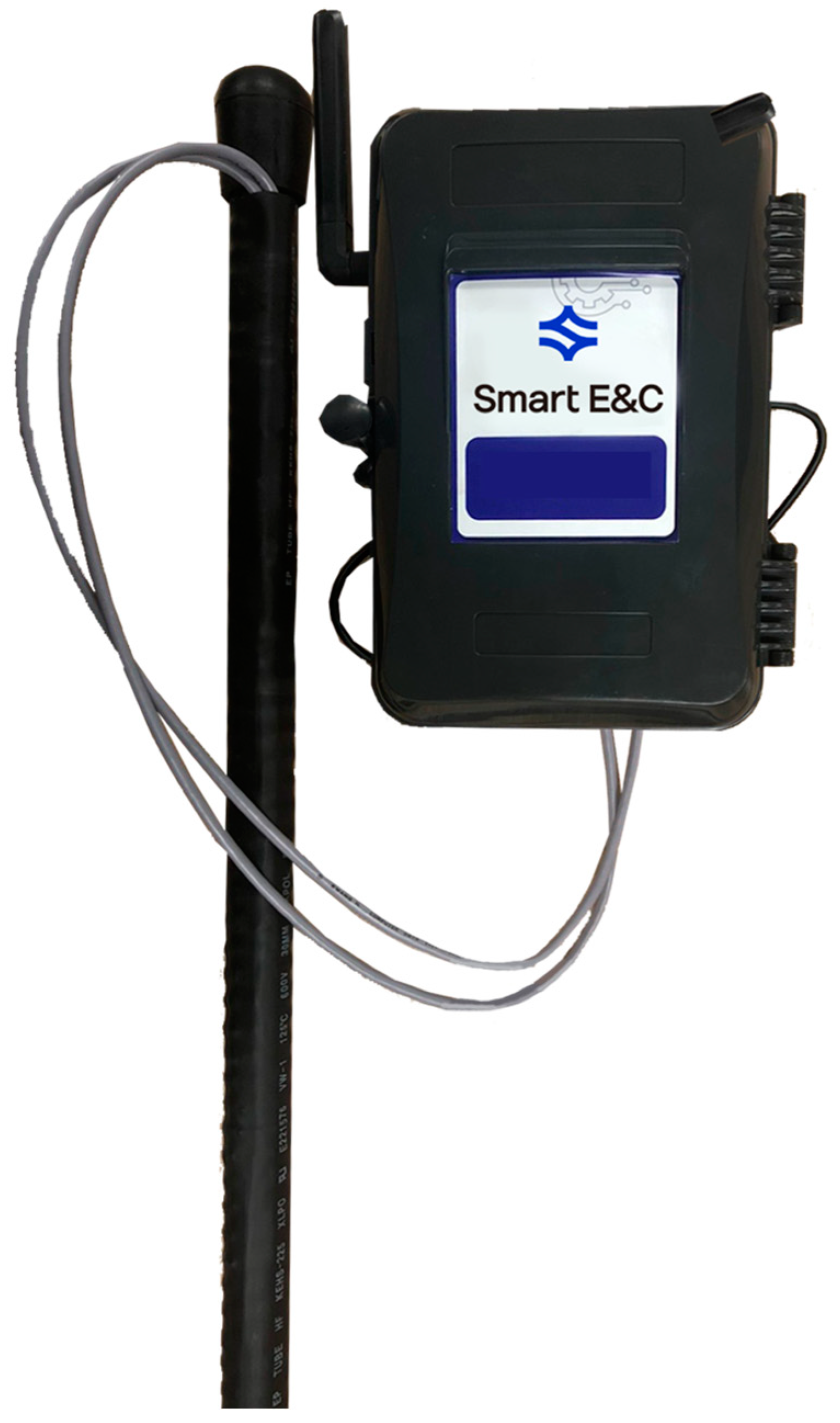
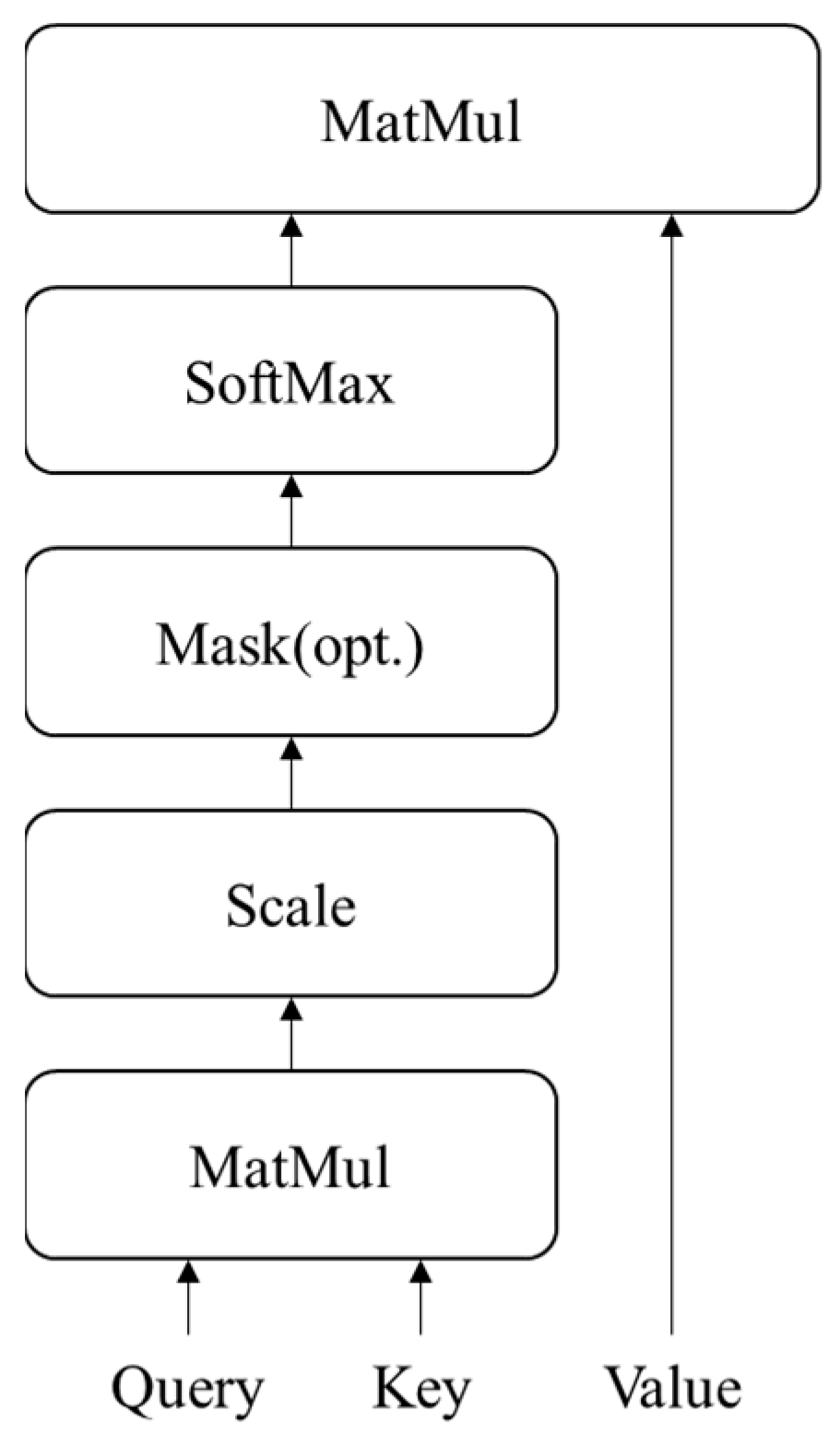
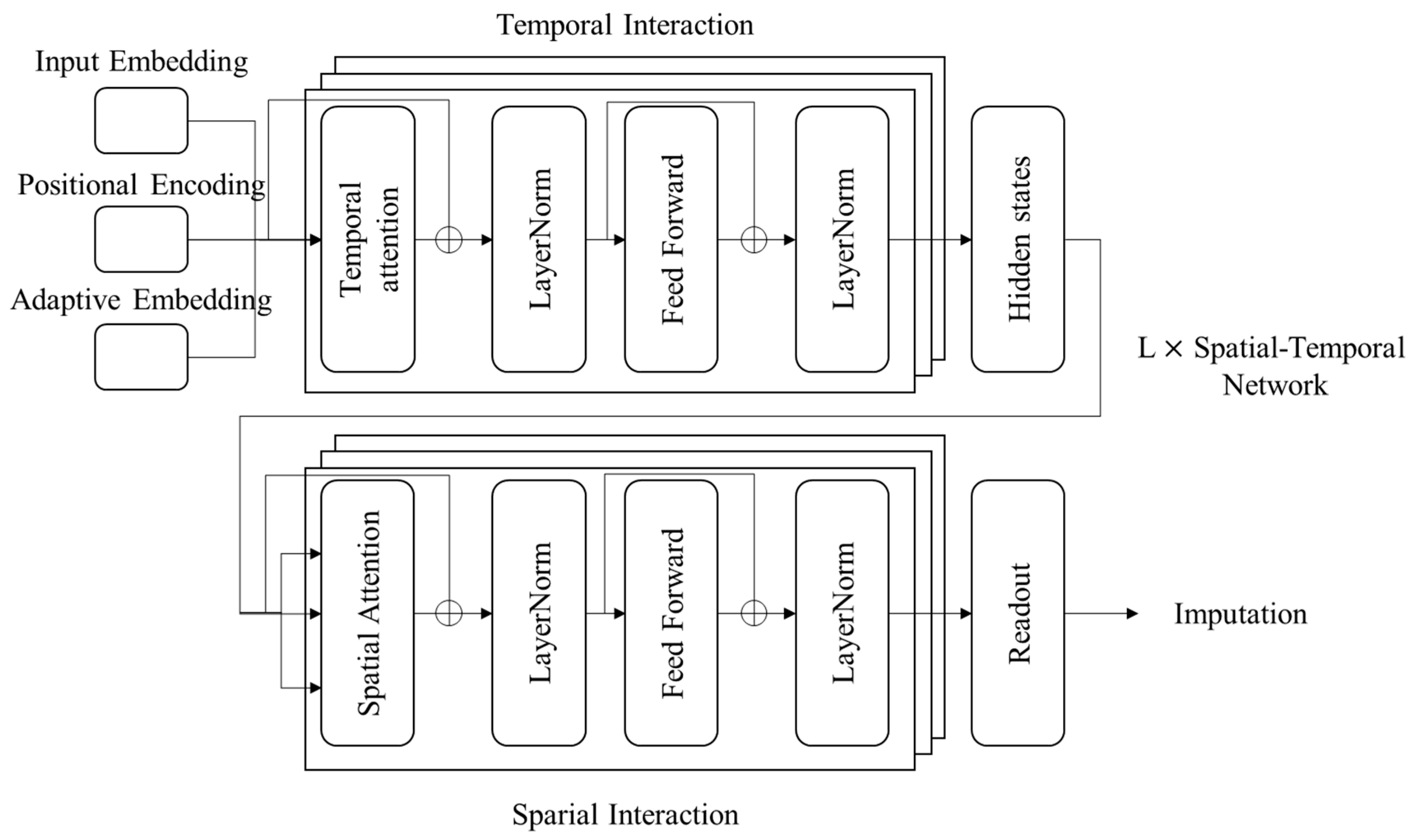
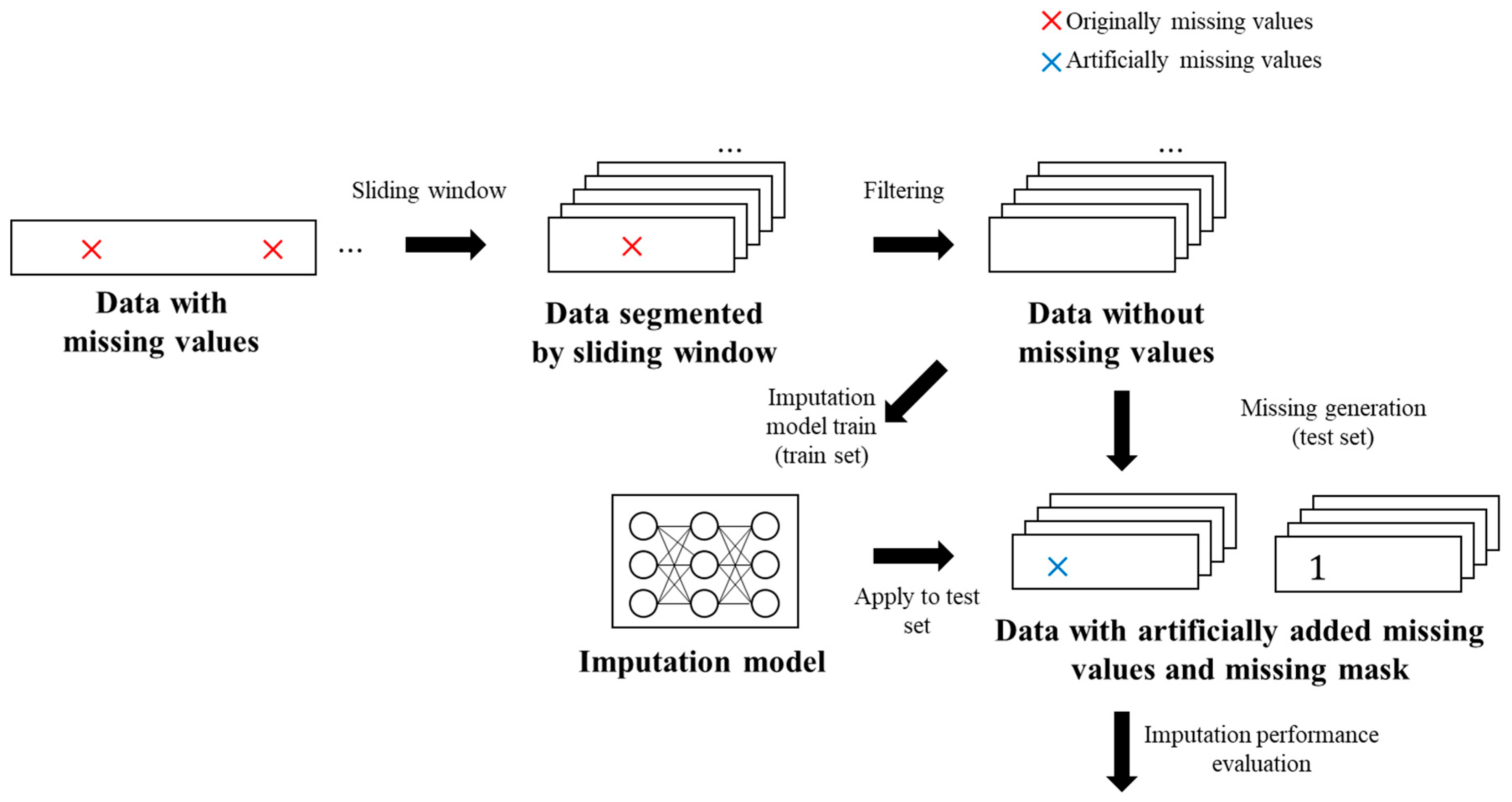
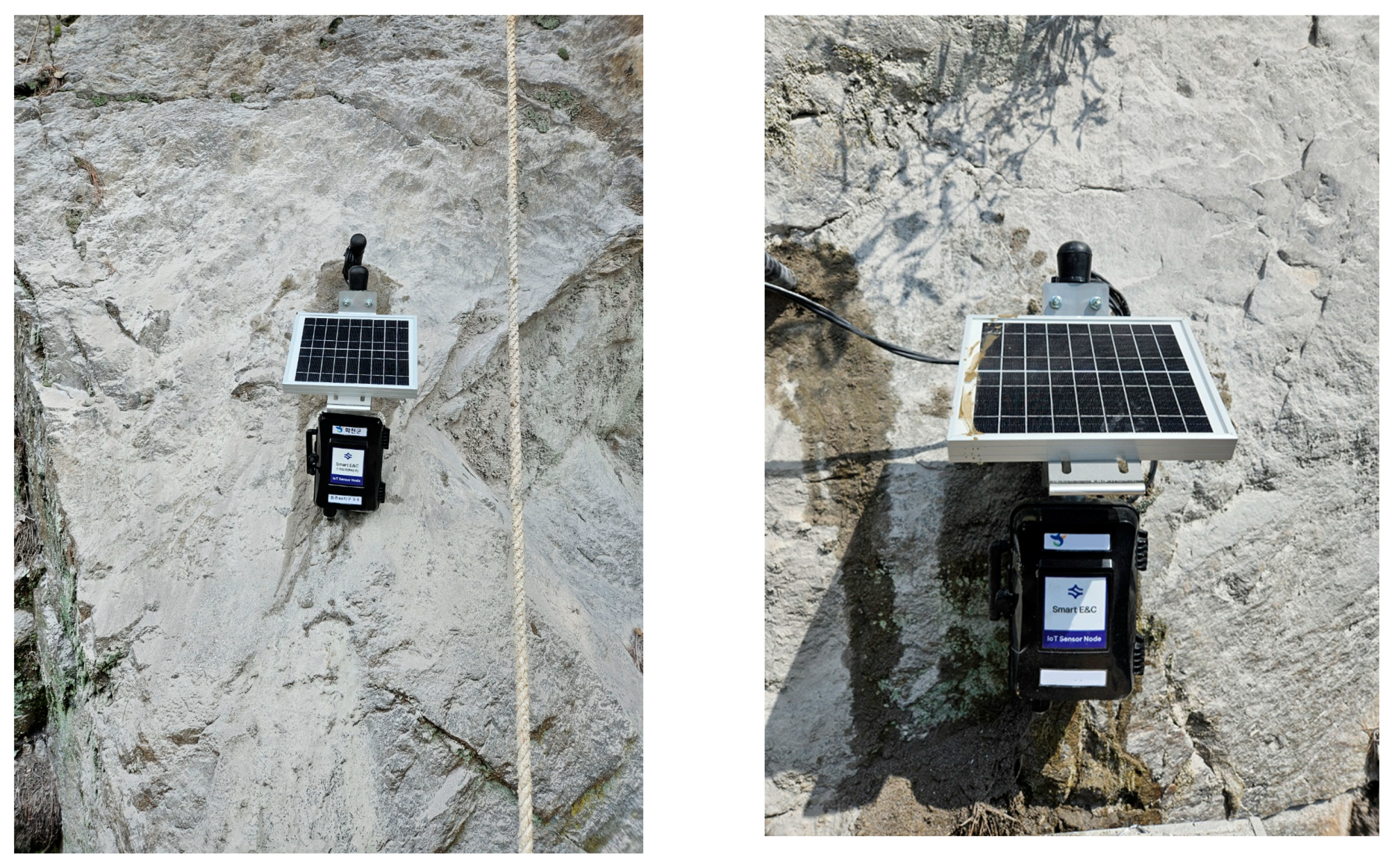
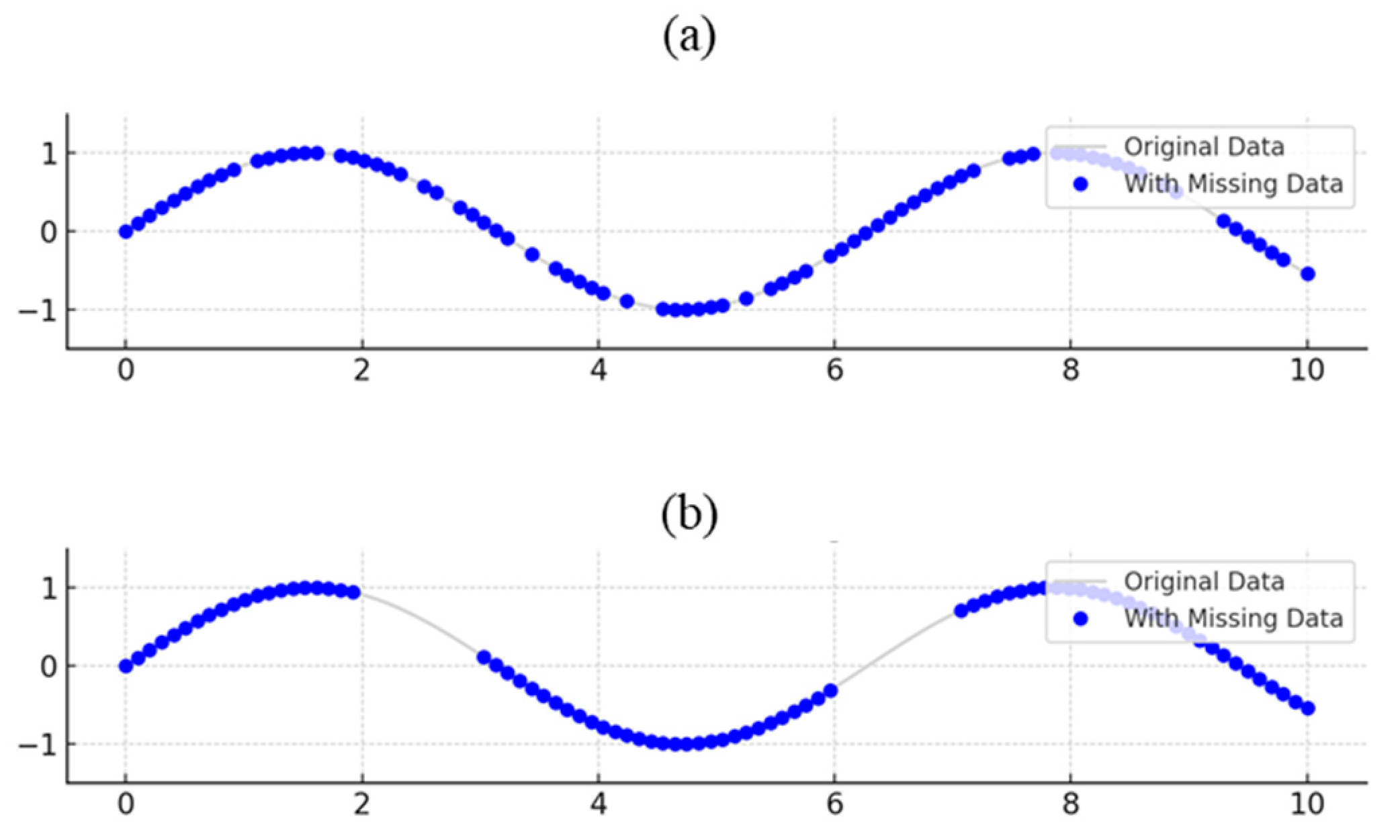
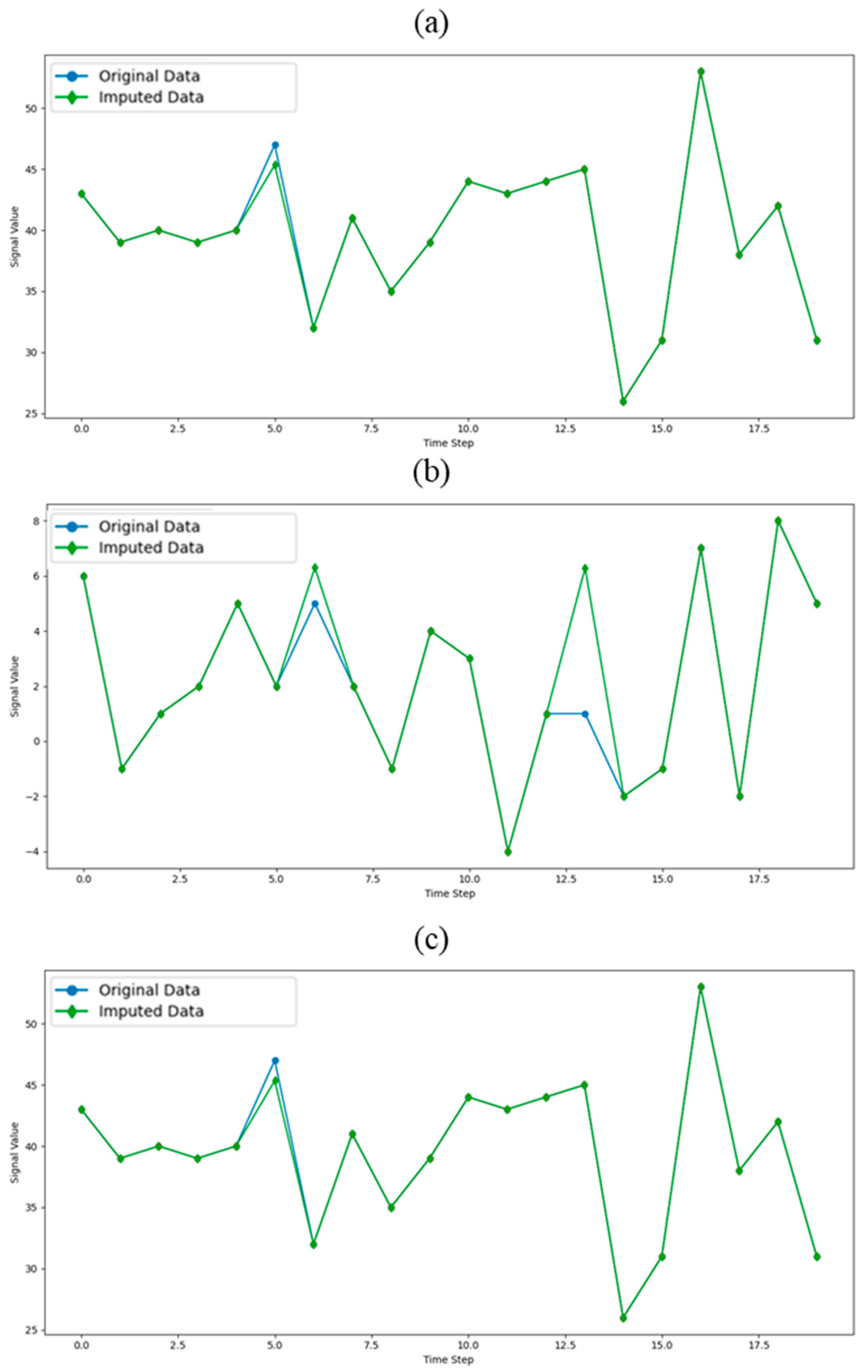
| Item | Specifications |
|---|---|
| Power Source | Solar-powered with low-power sleep mode |
| Data Transmission | LoRa-based communication, optimized for low power and high signal-to-noise ratio |
| Measurement Frequency | Adjustable from 10 ms to 1 s |
| Imputation Method | Pattern | Missing Rate (%) | MAE | MSE | RMSE |
|---|---|---|---|---|---|
| Mean imputation | Random | 1 | 28.2 | 1521.1 | 39.0 |
| Mean imputation | Random | 3 | 34.7 | 90,931.5 | 301.5 |
| Mean imputation | Random | 5 | 39.4 | 609,442.0 | 780.7 |
| Mean imputation | Random | 10 | 60.3 | 21,896,192.4 | 4679.3 |
| Mean imputation | Block | 1 | 29.5 | 3772.7 | 61.4 |
| Mean imputation | Block | 3 | 44.4 | 986,135.8 | 993.0 |
| Mean imputation | Block | 5 | 29.3 | 5829.9 | 76.4 |
| Mean imputation | Block | 10 | 65.9 | 23,356,052.1 | 4832.8 |
| Linear imputation | Random | 1 | 9.7 | 435.1 | 20.9 |
| Linear imputation | Random | 3 | 77.9 | 18,700,375.6 | 4324.4 |
| Linear imputation | Random | 5 | 54.5 | 11,706,671.5 | 3421.5 |
| Linear imputation | Random | 10 | 43.0 | 21,945,710.4 | 4684.6 |
| Linear imputation | Block | 1 | 841.5 | 340,310,434.1 | 18,447.5 |
| Linear imputation | Block | 3 | 31.9 | 1,218,551.8 | 1103.9 |
| Linear imputation | Block | 5 | 13.6 | 5403.4 | 73.5 |
| Linear imputation | Block | 10 | 53.0 | 23,479,679.3 | 4845.6 |
| SAITS | Random | 1 | 1.43 | 11.34 | 3.37 |
| SAITS | Random | 3 | 2.41 | 9,541.94 | 97.68 |
| SAITS | Random | 5 | 7.35 | 437,946.43 | 661.78 |
| SAITS | Random | 10 | 8.09 | 439,525.97 | 662.97 |
| SAITS | Block | 1 | 0.94 | 2.93 | 1.71 |
| SAITS | Block | 3 | 12.18 | 737,333.76 | 858.68 |
| SAITS | Block | 5 | 1.72 | 3444.00 | 58.69 |
| SAITS | Block | 10 | 4.94 | 232,504.61 | 482.19 |
| ImputeFormer | Random | 1 | 0.78 | 5.08 | 2.25 |
| ImputeFormer | Random | 3 | 0.81 | 7.28 | 2.70 |
| ImputeFormer | Random | 5 | 0.95 | 248.94 | 15.78 |
| ImputeFormer | Random | 10 | 4.57 | 220,725.42 | 469.81 |
| ImputeFormer | Block | 1 | 0.84 | 8.27 | 2.88 |
| ImputeFormer | Block | 3 | 1.29 | 52.24 | 7.23 |
| ImputeFormer | Block | 5 | 1.43 | 3169.29 | 56.30 |
| ImputeFormer | Block | 10 | 5.15 | 234,489.16 | 484.24 |
| BRITS | Random | 1 | 0.76 | 4.84 | 2.20 |
| BRITS | Random | 3 | 0.73 | 2.96 | 1.72 |
| BRITS | Random | 5 | 2.48 | 9537.28 | 97.66 |
| BRITS | Random | 10 | 1.27 | 2942.83 | 54.25 |
| BRITS | Block | 1 | 0.99 | 118.42 | 10.88 |
| BRITS | Block | 3 | 2.03 | 9716.57 | 98.57 |
| BRITS | Block | 5 | 1.54 | 3267.75 | 57.16 |
| BRITS | Block | 10 | 1.35 | 3203.19 | 56.60 |
Disclaimer/Publisher’s Note: The statements, opinions and data contained in all publications are solely those of the individual author(s) and contributor(s) and not of MDPI and/or the editor(s). MDPI and/or the editor(s) disclaim responsibility for any injury to people or property resulting from any ideas, methods, instructions or products referred to in the content. |
© 2025 by the authors. Licensee MDPI, Basel, Switzerland. This article is an open access article distributed under the terms and conditions of the Creative Commons Attribution (CC BY) license (https://creativecommons.org/licenses/by/4.0/).
Share and Cite
Lee, S.; Kim, Y.; Ji, B.; Kim, Y. Addressing Missing Data in Slope Displacement Monitoring: Comparative Analysis of Advanced Imputation Methods. Buildings 2025, 15, 236. https://doi.org/10.3390/buildings15020236
Lee S, Kim Y, Ji B, Kim Y. Addressing Missing Data in Slope Displacement Monitoring: Comparative Analysis of Advanced Imputation Methods. Buildings. 2025; 15(2):236. https://doi.org/10.3390/buildings15020236
Chicago/Turabian StyleLee, Seungjoo, Yongjin Kim, Bongjun Ji, and Yongseong Kim. 2025. "Addressing Missing Data in Slope Displacement Monitoring: Comparative Analysis of Advanced Imputation Methods" Buildings 15, no. 2: 236. https://doi.org/10.3390/buildings15020236
APA StyleLee, S., Kim, Y., Ji, B., & Kim, Y. (2025). Addressing Missing Data in Slope Displacement Monitoring: Comparative Analysis of Advanced Imputation Methods. Buildings, 15(2), 236. https://doi.org/10.3390/buildings15020236







